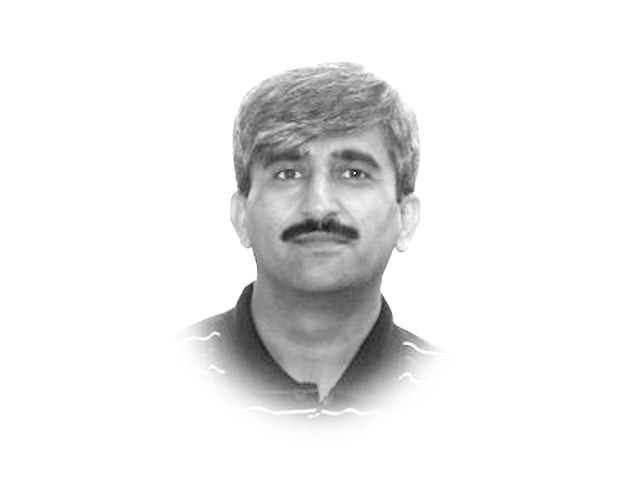Child protection in Khyber-Pakhtunkhwa
Imran Khan agrees that child sexual abuse is common and we, as a society, have failed to protect children

The writer is a child rights activist and development practitioner with a Masters in Human Rights from the London School of Economics. He tweets at @amahmood72
Let’s review what system is in place in Khyber-Pakhtunkhwa (K-P) to protect children from abuse, exploitation and violence and what should be done by the provincial government to protect each and every child in the province. Riaz Ahmad from this paper has highlighted the cases of mutilated bodies of children as young as four or five being found in Peshawar. How can this be prevented and what steps have been taken so far? I understand from newspaper reports that everyone is clueless. Organised child sexual abuse cases from K-P have been regularly highlighted in the media. The documentary Pakistan’s Hidden Shame highlighted the ordeal of young boys being abused by paedophiles. In the documentary, PTI Chairman Imran Khan agrees that child sexual abuse is common and we, as a society, have failed to protect our children. Following the Kasur scandal, Imran Khan criticised the Punjab government and said that as a Pakistani, his head hangs in shame after hearing about this child abuse case.
There is no doubt that a large number of children living and/or working on the streets easily fall prey to abuse and exploitation in K-P and rest of the country. However, abuse, exploitation and violence are not limited to children living and working on the streets only, and children are facing serious problems even within the four walls of their homes. In April 2015, the K-P government appointed Reham Khan as ambassador for children living and/or working on the streets. This was a positive development to help put the much-needed attention on child protection in K-P. The solution by the K-P government and PTI, however, is not new and they came up with an idea on the pattern of the Punjab Child Protection and Welfare Bureau to establish what they call “a state-of-the-art institution” with a capacity to house 1,000 children. Instead of putting the focus on establishing an institution, it will be more practical if the focus is on establishing and strengthening a child protection system to cater to all the protection issues of children across the province and not limited to one single issue and that too at the level of the provincial capital alone.
A child protection system should consist of a comprehensive approach to the protection of children from abuse, neglect, exploitation and violence, and should be able to respond effectively when the need arises by providing necessary treatment, rehabilitation and compensation to child victims. Developing appropriate policies and regulations, such as interventions for prevention and response, ways to measure progress, and encouraging the participation of children, their parents, caregivers and community members, as well as local and international NGOs and civil society, are crucial.
Child protection systems are made up of a set of components that when properly coordinated work together to strengthen the protective environment around each child. These components include a strong legal and policy framework, which is present in the shape of the K-P Child Protection and Welfare Act 2010. There is, however, the need on part of the government of K-P and Imran Khan to ensure the implementation of this child protection-related legislation, which is considered the most comprehensive child protection law compared to similar laws in other provinces. Adequate budgetary allocation is a key component which is missing and only a grant of Rs10 million has been allocated every year since 2011 when the K-P Child Protection and Welfare Commission (KPCPWC) was established.
K-P should allocate enough resources to establish the child protection system across all 25 districts. Approximately Rs300 million will be enough for a robust child protection system in the province. This sum is under one per cent of the provincial budget. Multi-sectoral coordination is quite weak as the quarterly meetings of the KPCPWC never take place. Child-friendly preventive and responsive services are missing except in a few districts where Child Protection Units have been established with donor support. A child protection workforce is also missing, except in 10 districts where it is again supported by donors. Robust data on child protection issues could be ensured only if the KPCPWC is active and has been provided with the necessary human and financial resources.
I hope that a candid review of the above points by the K-P government and Imran Khan will help put some focus on child protection in the province with a few practical steps, including budgetary allocation to establish and strengthen child protection systems. Only then will K-P be in a position to claim that it has taken solid steps to protect children in the province and prevent Kasur-like scandals.
Published in The Express Tribune, October 14th, 2015.
Like Opinion & Editorial on Facebook, follow @ETOpEd on Twitter to receive all updates on all our daily pieces.














COMMENTS
Comments are moderated and generally will be posted if they are on-topic and not abusive.
For more information, please see our Comments FAQ